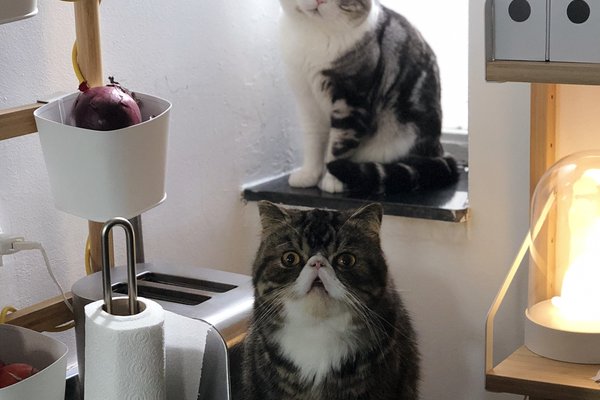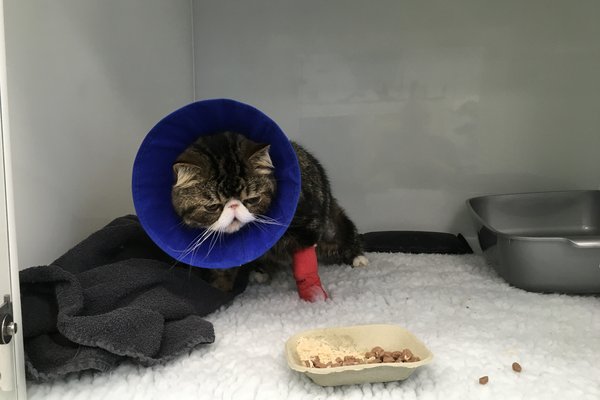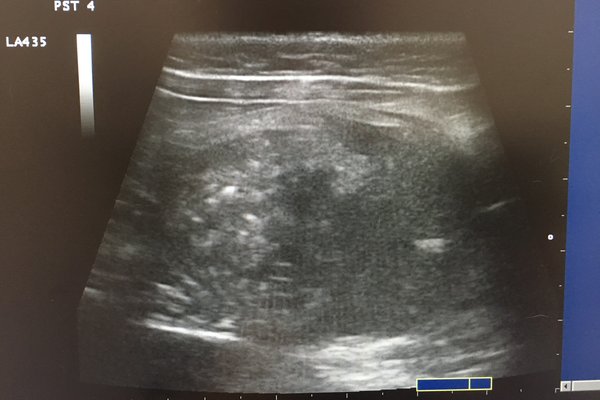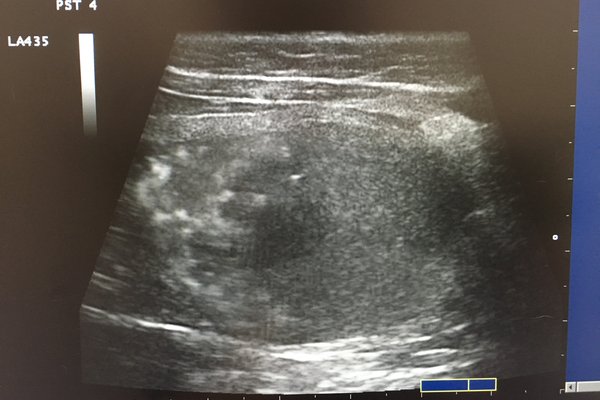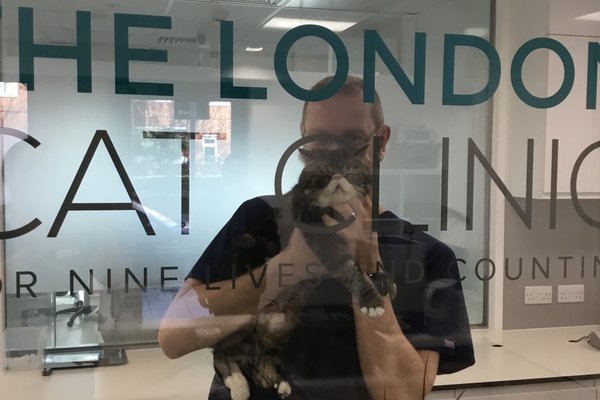Gus’s owners had noted he was being very quiet, his head was hanging to the side and seemed out of sorts. When Gus was first taken out of his carrier to be examined he was behaving in such a way Dr Jeremy’s first thought were that this was neurological (brain) disease. Further examination showed that Gus’s bladder was huge, and it was clear he could not urinate, and it was pain that was causing these unusual signs. We admitted Gus into hospital immediately, so we could determine the cause and initiate treatment starting with aggressive pain relief and intravenous fluid therapy.
Gus was carefully sedated to allow further examination and ultrasound of his bladder and urinary tract. It was immediately obvious from the scan why Gus couldn’t urinate. It was because his bladder was full of crystals, red blood cells, white blood cells and bladder lining cells which had all joined together to cause a blockage along the length of his penis (urethral obstruction). This blockage meant the urine had nowhere to go except to build-up in the bladder then back up into the kidneys where it caused painful post-renal acute kidney injury. His blood work showed massive elevation in his kidney parameters secondary to the acute injury and his urine analysis subsequently revealed a bacterial urinary tract infection.
If you can imagine a balloon half full of sand and water and then tip this on its side – this is exactly what Gus’s bladder looked like. This was the worst case Dr Jeremy had ever seen (see ultrasound image)
Gus had shown no signs prior to this of issues with his urinary tract! Cat’s are the ultimate camouflage artists when it comes to hiding pain or discomfort – if you think anything is out of the ordinary get them checked by your Vet.
To treat the problem, we passed a small urinary catheter into his bladder to relieve the obstruction then we passed a larger catheter that would allow us to remove as much of the debris as possible. Dr Jeremy, Alice and Maria flushed and drained Gus’s bladder for over 2 hours to remove all the debris! A catheter was left in place to ensure that the muscle in his penis didn’t spasm shut causing him to re-obstruct and he was transferred to The London Animal Hospital our wonderful emergency service for monitoring. He was started on antibiotics for his urinary tract infection in addition to his pain relief and intravenous fluids.
Gus did well in hospital and within a short time his kidney parameters had recovered completely, he was urinating by himself and was sent home. Unfortunately, within a short period whilst at home his owner noticed blood in his urine, and he didn’t seem to be able to pass urine easily, so he brought him back in to see us.
Gus’s bladder was big, and we were worried he had obstructed again so we admitted him for further examination. He was gently sedated, and catheter was passed, the muscle in his urethra had spasmed down making it narrower so urine wasn’t passing readily, the great news was there was no blockage or build-up of debris. His bladder was drained, and the catheter removed. Gus was sent home that evening with additional medication to relieve his urethral spasm which worked well, and he was soon back to normal.
It was clear that we needed to get Gus to drink more water, so we introduced complete high-quality canned wet food as well as the idea of using water fountains (moving water is more interesting to cats) to encourage him to take more water on board and flush his kidney and bladder through regularly.
He was in for a routine check last week and we are pleased to say he is doing well with no more debris in his bladder, weeing normally and a very happy cat.
Well done Gus!


